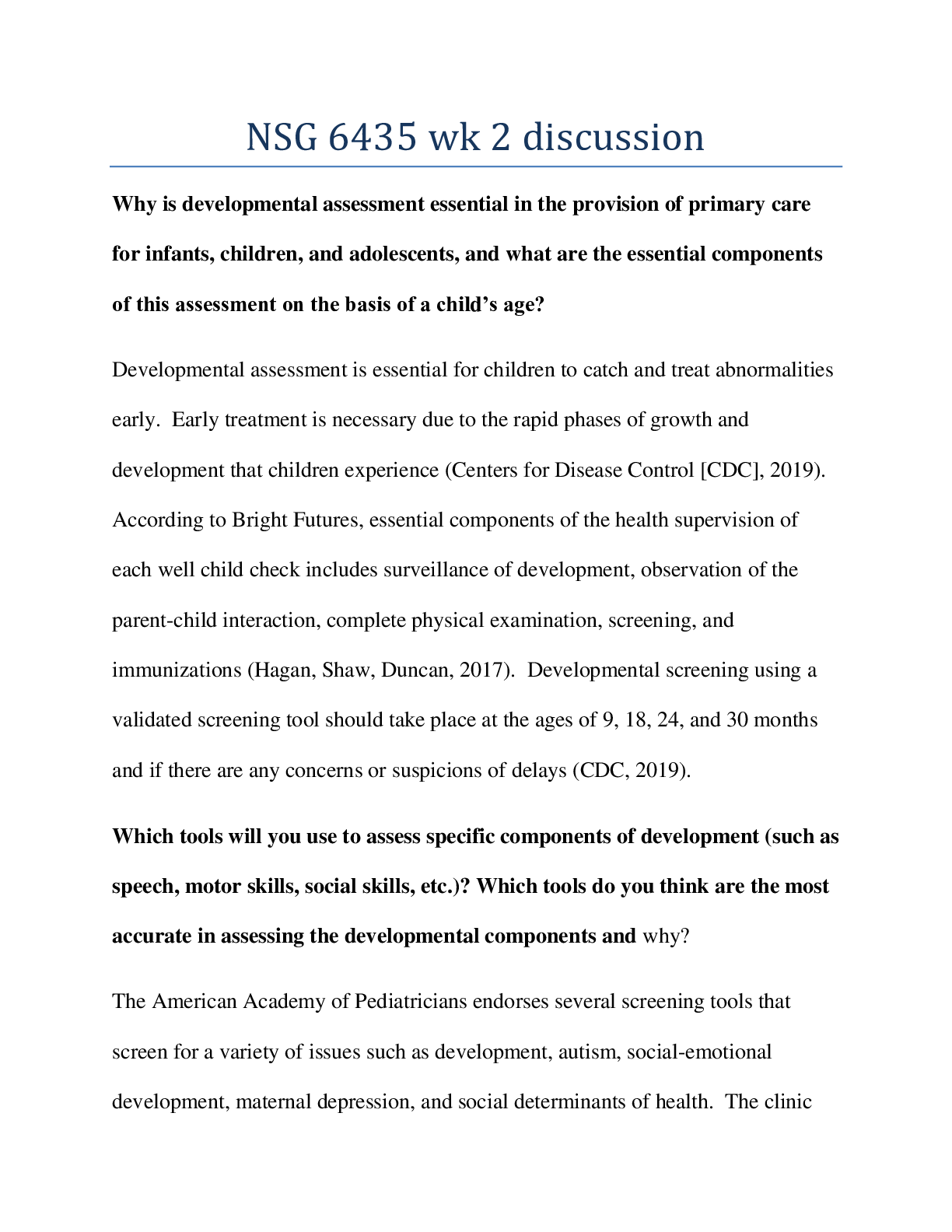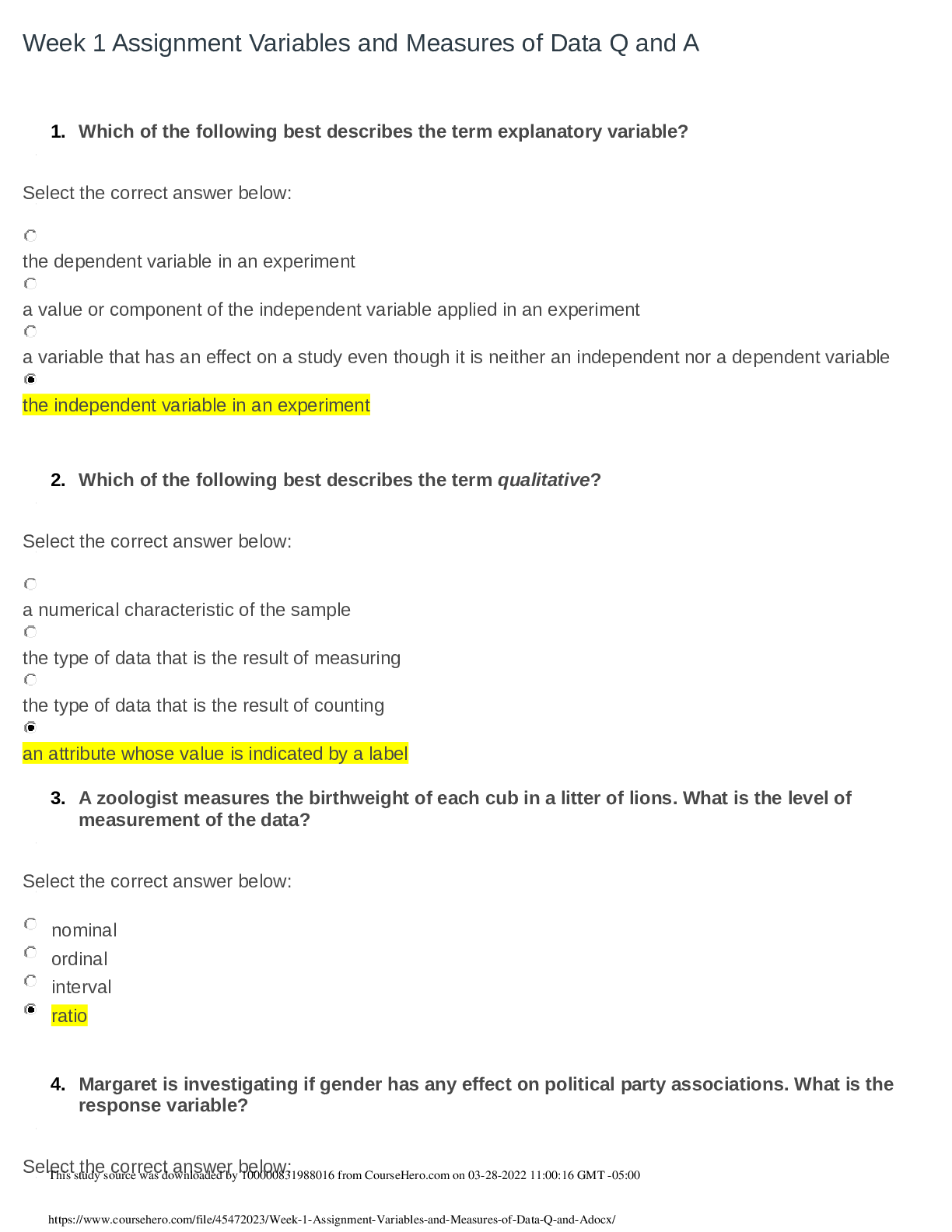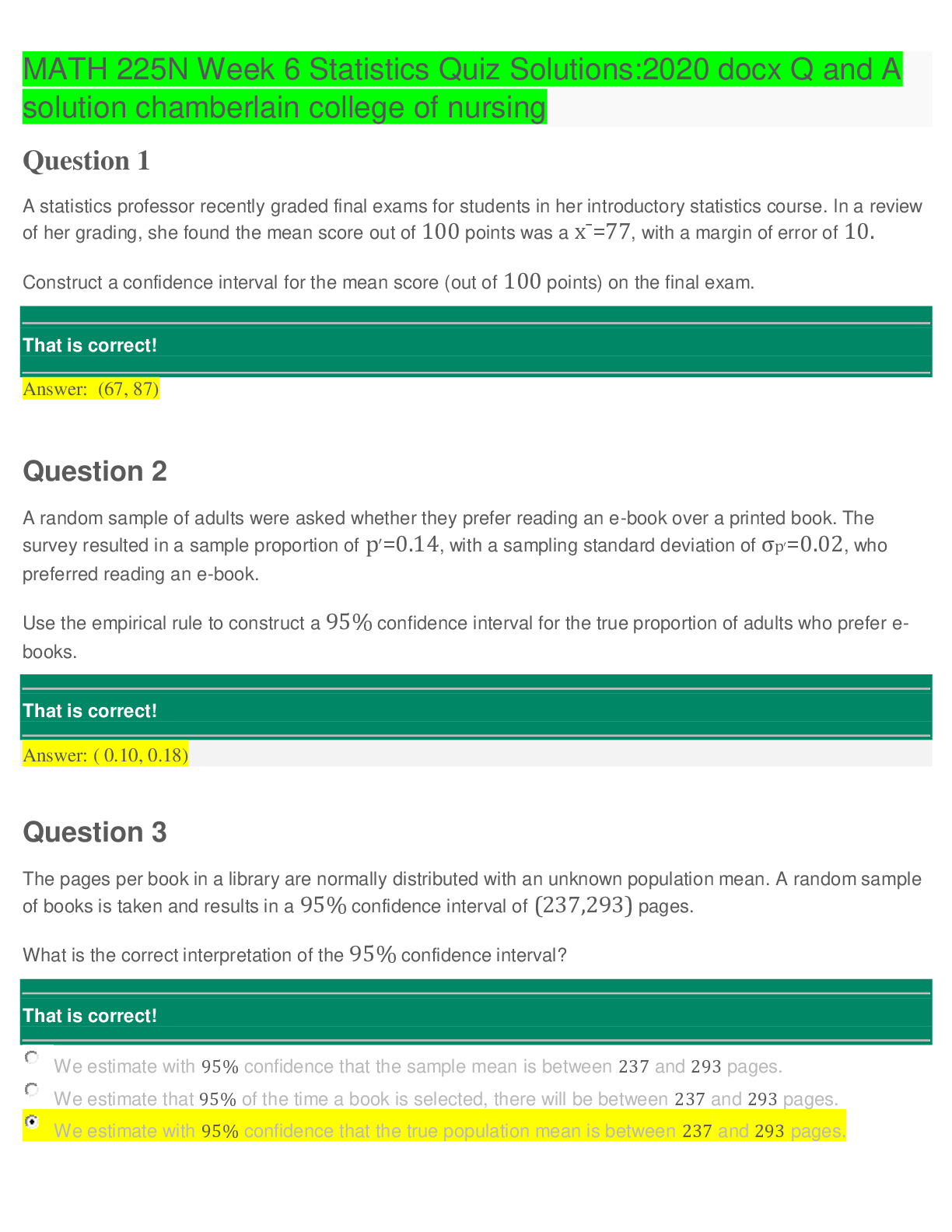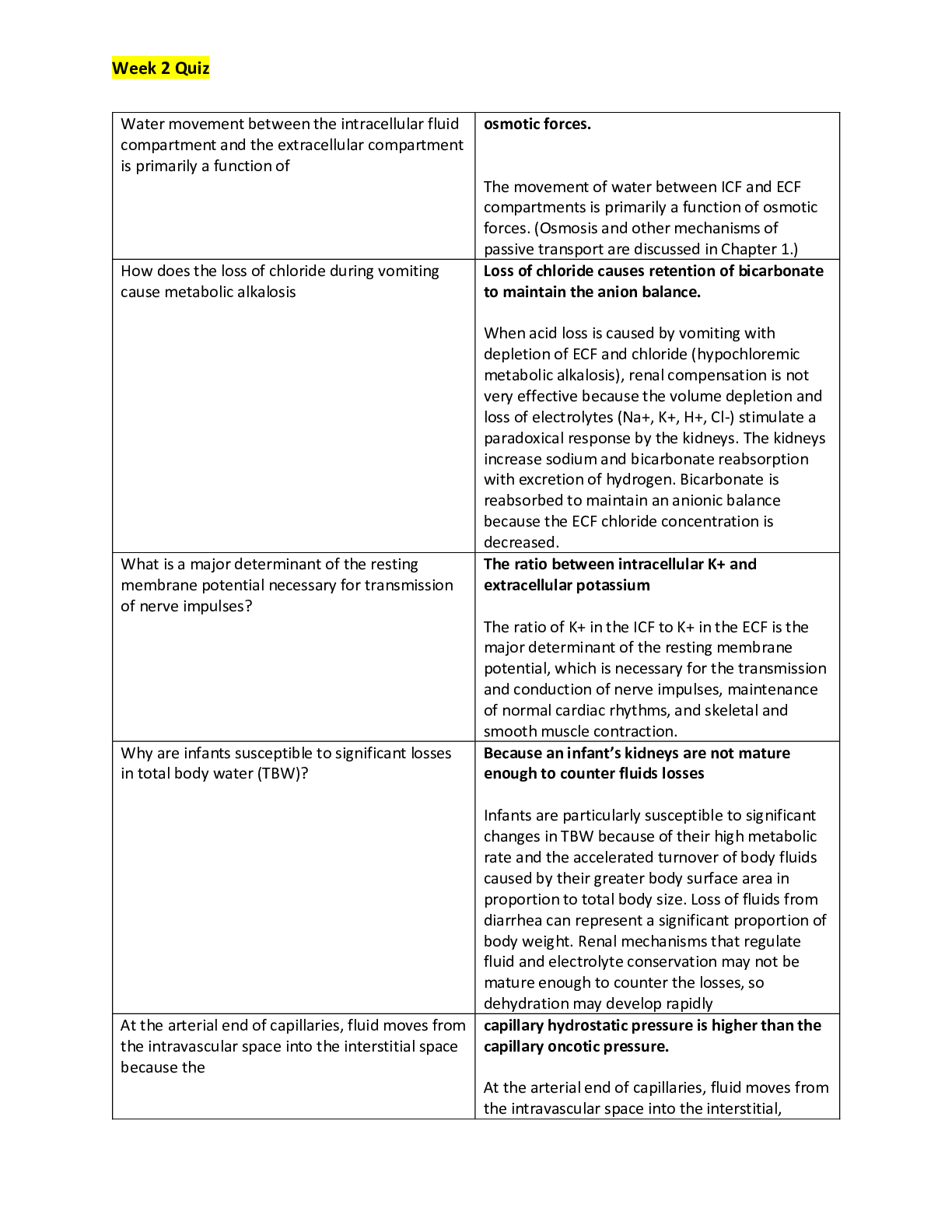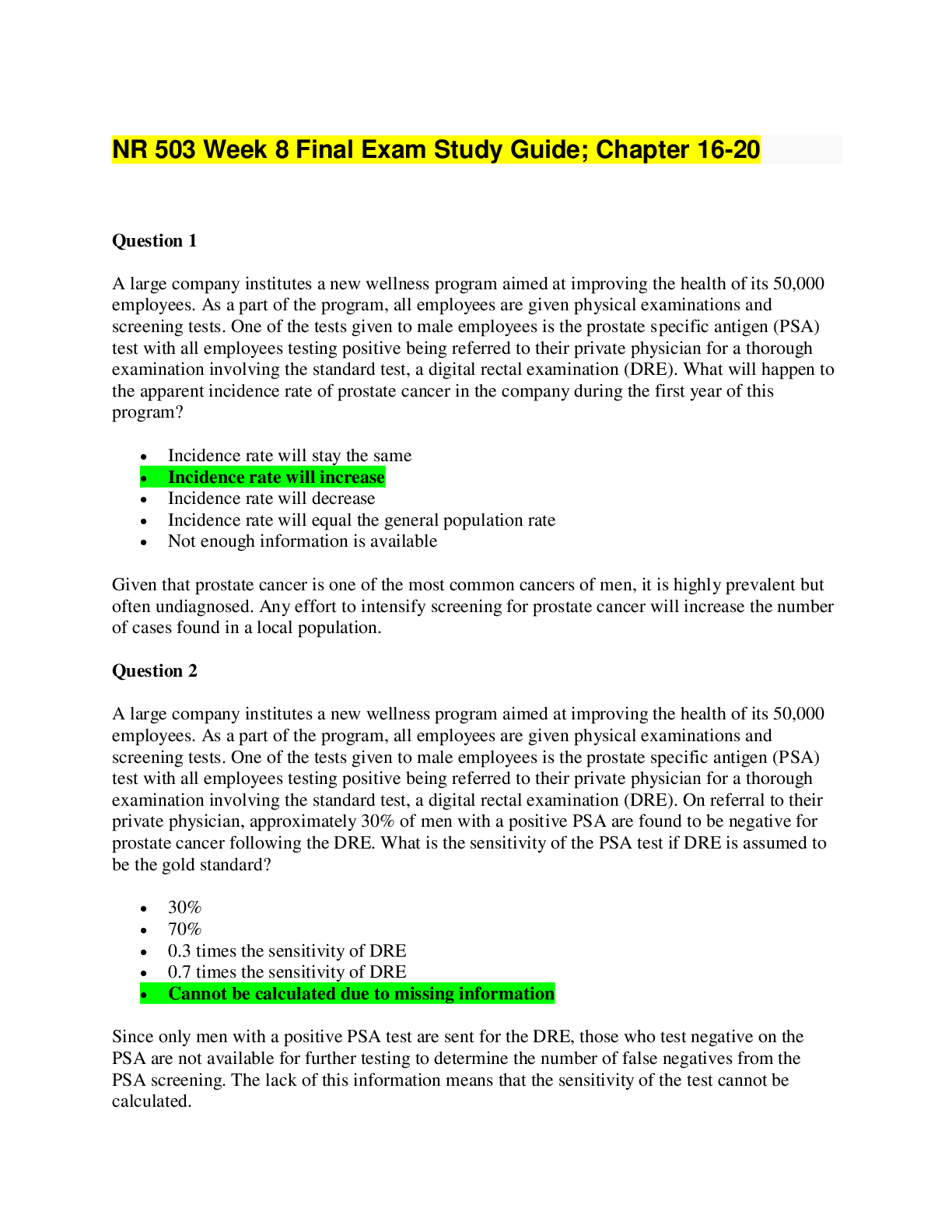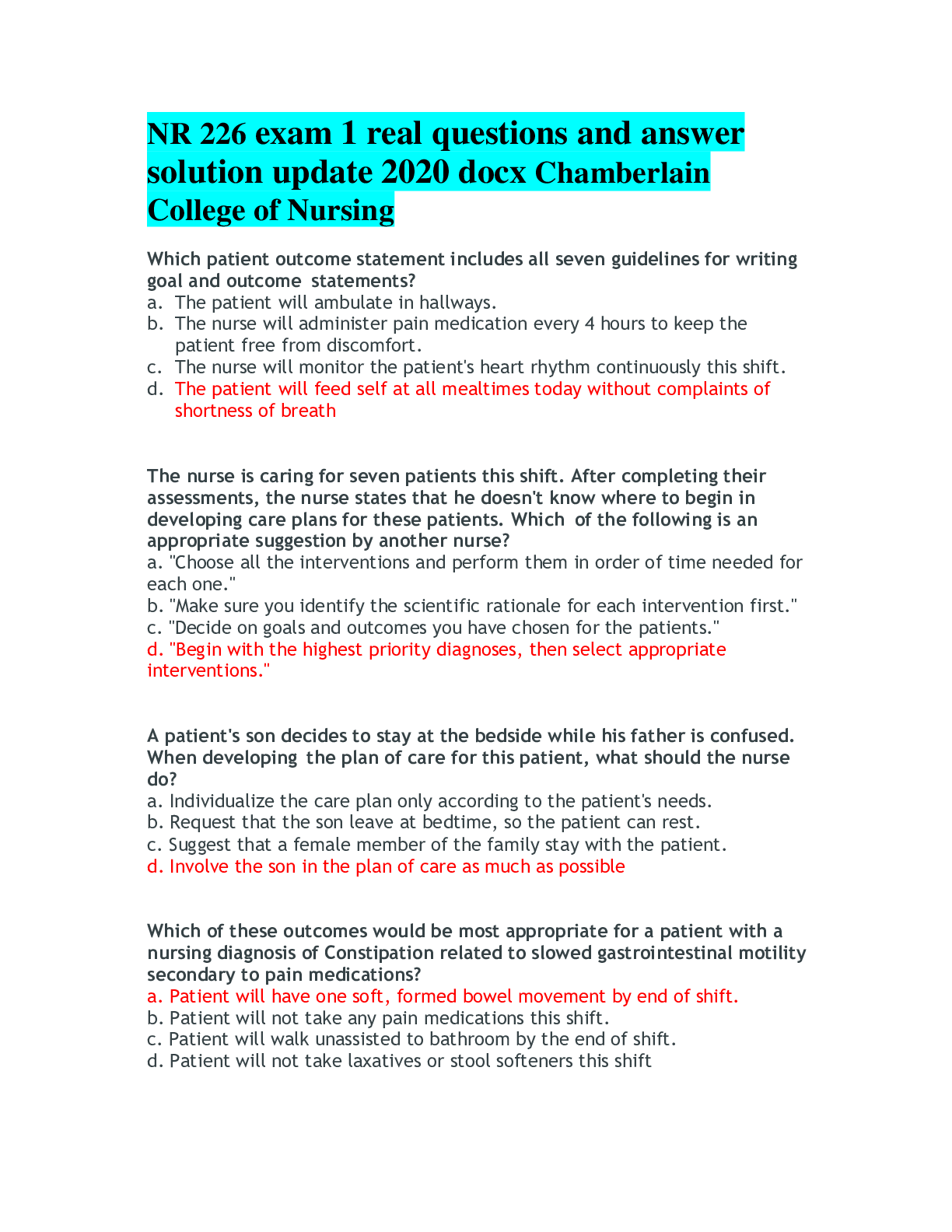*NURSING > QUESTIONS & ANSWERS > NURSING NR 228 Nutrition Nursing Care – Altered Acid-Base Balance -Edapt week 1. Chamberlain Col (All)
NURSING NR 228 Nutrition Nursing Care – Altered Acid-Base Balance -Edapt week 1. Chamberlain College of Nursing
Document Content and Description Below
Nursing Care – Altered Acid-Base Balance Acid-base balance is one way the body maintains homeostasis, a complex system of checks and balances that keeps the serum (blood) pH between 7.35 and 7.4... 5. Measured as the ratio of bicarbonate (HCO3‾) to carbonic acid (H2CO3), a 20:1 ration must be maintained for the pH to remain close to 7.4. Although the pH of other body fluids vary, serum pH is the measure used to assess the overall acid-base balance within the human body. Building on an understanding of the normal acid-base balance acquired in anatomy and physiology and the conditions that contribute to acid-base imbalances learned in pathophysiology, this lesson provides learners the opportunity to apply their knowledge of the nursing process, critical thinking, health assessment, and pharmacology to the care of clients experiencing acid-base imbalances. By completing these learning activities, the learner will gain the knowledge and skills needed to: Identify the health promotion needs for patients with acid-base imbalances. Develop individualized nursing care for patients experiencing acidbase imbalances. Utilize clinical judgement and the nursing process when caring for patients with acid-base imbalances.An arterial blood gas (ABG) test measures the acidity (pH), levels of oxygen, and carbon dioxide in arterial blood. ABG’s are often used in conjunction with other tests to check how well the lungs can move oxygen into the blood and remove carbon dioxide from the blood. Although other tests, such as potassium, may be obtained with an ABG, they must be prescribed in addition to the ABG. Your response is correct! Data Interpretation: Arterial Blood Gas Analysis Matt presents to the emergency department with severe vomiting for 72 hours, irritability, hand tremors and muscle cramps that began today. Thehealth care provider prescribes several items, including an arterial blood gas (ABG). The nurse is using the Tic-Tac-Toe method to evaluate the results. Drag the elements used to evaluate acid-base balance to the correct locations for these results: pH 7.51 PaCO2 40 HCO3‾ 36, O2 Sat 94% PaO2 90 Feedback for 1 - The pH and HCO3‾ are alkaline (high) and the PaCO2 is normal. The O2 Sat and PaO2 are used to assess oxygenation levels, not acid-base balance, and are not included in the analysis of ABGs. Acidic Normal Alkaline PaCO2 pH HCO3‾ Prioritizing Cues: Worsening of Altered Acid-Base Balance While caring for Matt the nurse observes changes in the physical assessment. Which findings provide cues that Matt’s acid-base balance is getting worse? Select all that apply. Hematemesis Dysrhythmias Lethargy Hypertonic muscles Hyperreflexia Slow, deep respirationsBased on Matt’s initial symptoms (severe vomiting for 72 hours, irritability, hand tremors and muscle cramps) assessment findings that indicate a worsening acid-base balance include lethargy, dysrhythmias, hypertonic (tight) muscles, and slow, deep respirations that result from the increasing pH and electrolyte imbalances that occur as the body tries to compensate for the altered pH. Hyperreflexia indicates excitable muscles and is associated with respiratory alkalosis. Hematemesis, or blood present in Matt’s vomit, is not related to his acid-base balance. Your response is correct! Conditions Associated With Altered Acid-Base Balance Although clients experiencing alterations in acid-base balance are often seriously ill and being treated in critical care areas, individuals at risk for alterations are present in all health care settings and community. In fact, people at risk for acid-base imbalance are everywhere, living their lives as usual, without being recognized. A cousin with breast cancer. The grocery store employee who is obese. A grandparent with chronic obstructive lung disease (COPD). A roommate who has a very high fever and lost their sense of taste and smell. A person attending synagogue, temple, or church who is living with diabetes mellitus. When at risk individuals seek health care, the nurse is responsible for recognizing the risk and planning care to detect acid-base alterations early. Before clicking on each image below, write down as many conditions that contribute to acidosis and alkalosis as you can recall from pathophysiology. Then compare your list to what is written.Transcript Link Conditions Associated with Acidosis o Chronic respiratory disease (e.g., COPD) o Barbiturate or sedative overdose o Chest wall abnormality o Severe pneumonia o Atelectasis o Respiratory muscle weakness [Show More]
Last updated: 1 year ago
Preview 1 out of 173 pages
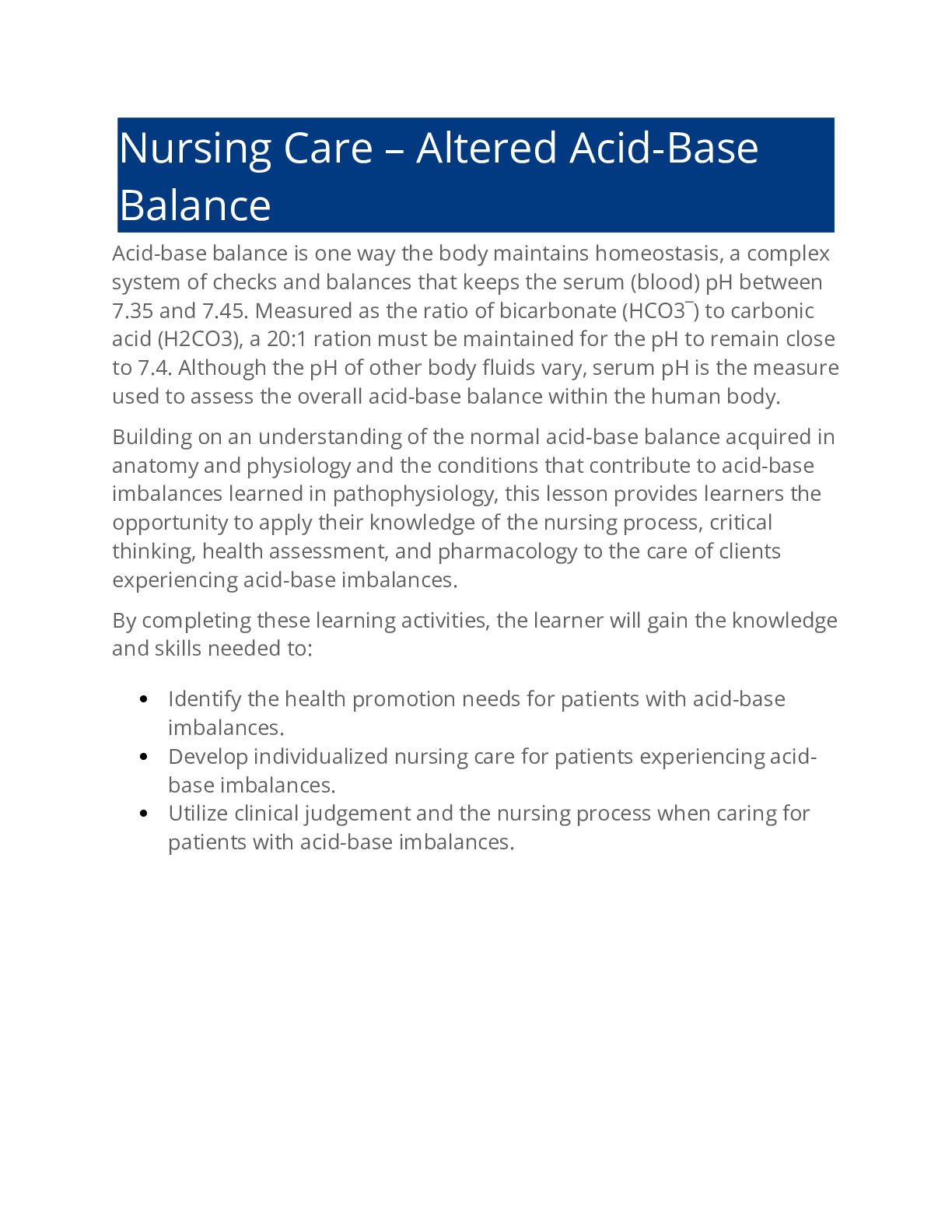
Reviews( 0 )
Document information
Connected school, study & course
About the document
Uploaded On
Mar 28, 2023
Number of pages
173
Written in
Additional information
This document has been written for:
Uploaded
Mar 28, 2023
Downloads
0
Views
72













.png)


